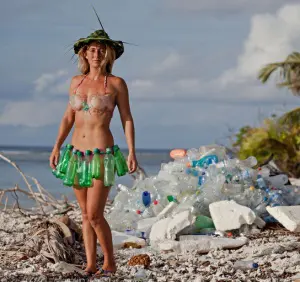Global – Over half of the materials leaking into the world’s oceans comes from five rapidly-developing countries, namely China, Indonesia, the Philippines, Vietnam and Thailand. But according to the environmental advocacy group Ocean Conservancy, its four-point plan could cut 65% of the plastic pollution in this region by 2025, translating into a 45% reduction in plastics flowing into the oceans globally.
The programme suggested by the Ocean Conservancy would cost roughly US$ 5 billion per year ‘if executed today’. It stresses that there is no ‘one-size-fits-all’ solution, with the mix of required solutions including collaboration with industry to introduce new materials, recovery and recycling approaches that would help uncontrolled plastic waste to ‘peak globally’ by 2030.
Other suggestions include closing ‘leakage points’ within the collection system by optimising transport systems to eliminate illegal dumping, and closing dump sites located near waterways. ‘Plastic waste is over twice as likely to end up in waterways and the ocean if uncollected,’ the report states. Therefore, it is important to increase waste collection rates through offering ‘expanded services’.
Another approach is the manual sorting of waste in rural areas to extract high-value plastic waste for recycling and to convert the low-value waste into fuel for use in the cement industry. According to the Ocean Conservancy, it would be best to deploy a mix of waste-to-fuel and waste-to-electricity technologies in cities.
By 2025, there could be 250 million tonnes of plastic in the oceans. But the organisation adds that, although ‘daunting’, the problem ‘is not insurmountable’.
Don't hesitate to contact us to share your input and ideas. Subscribe to the magazine or (free) newsletter.



